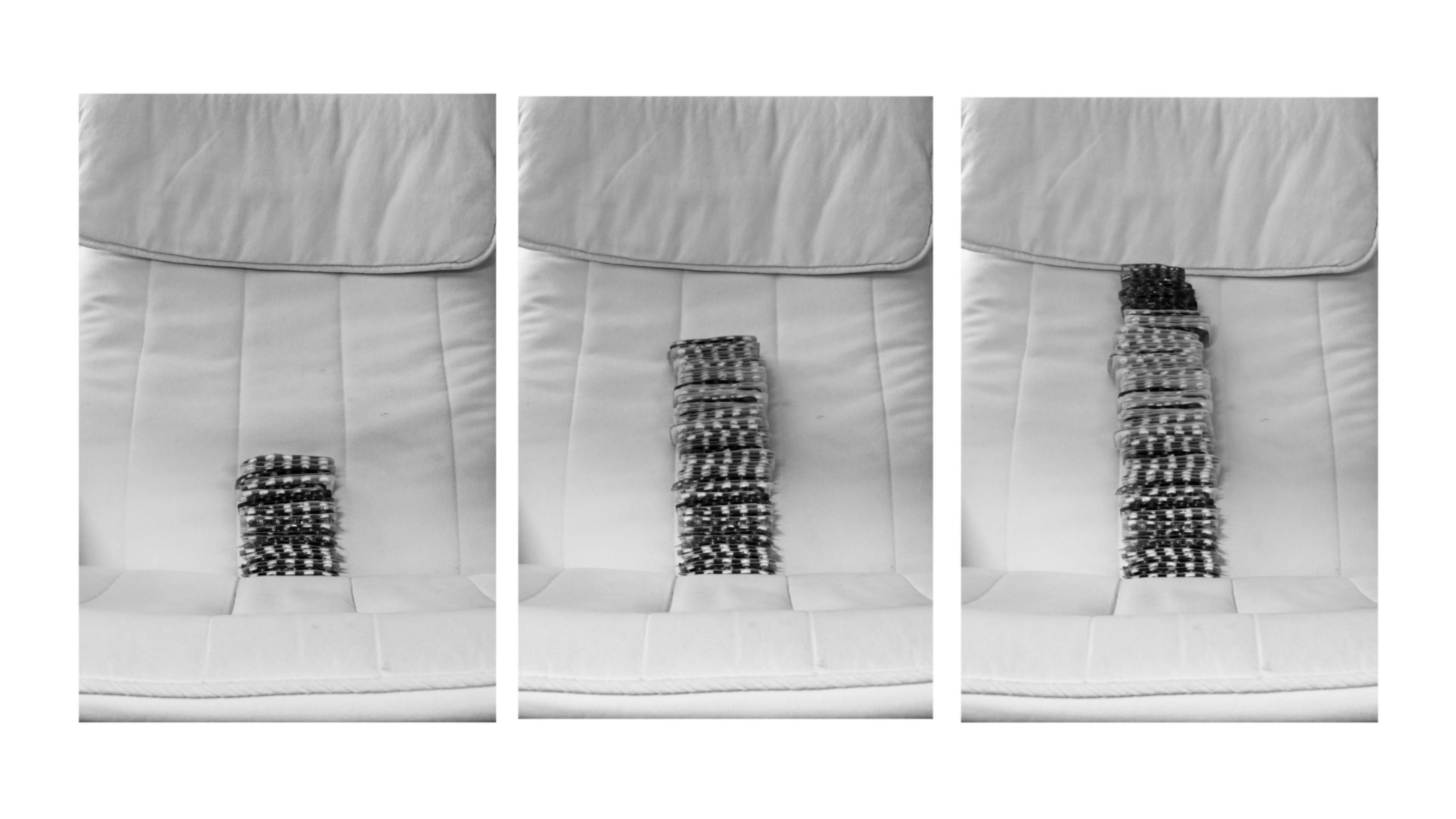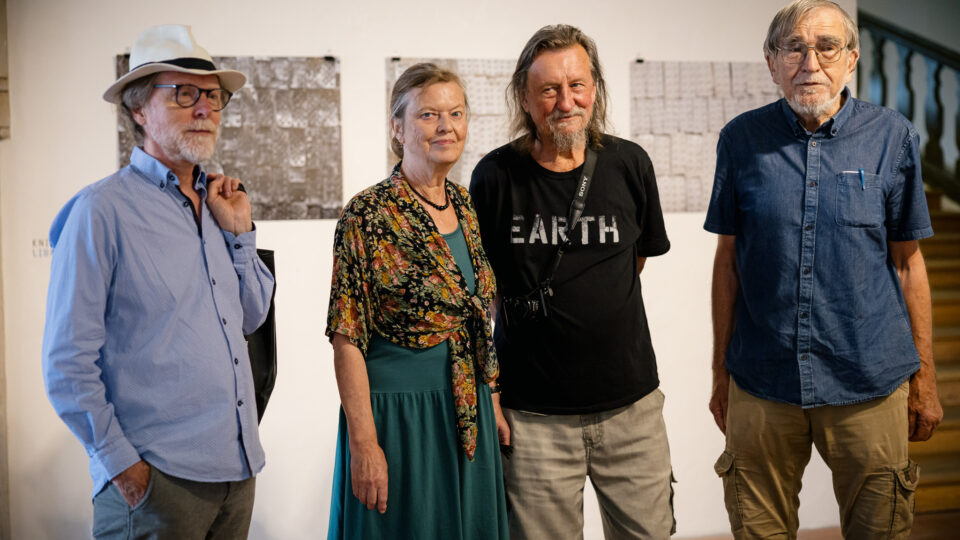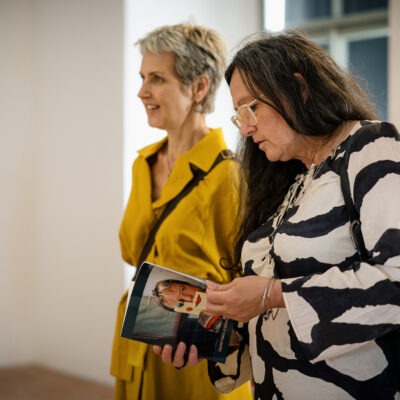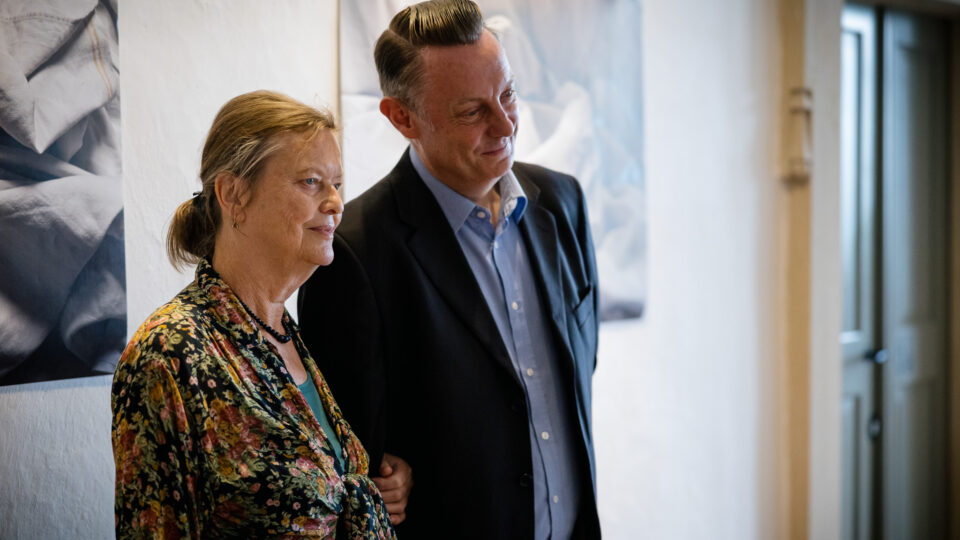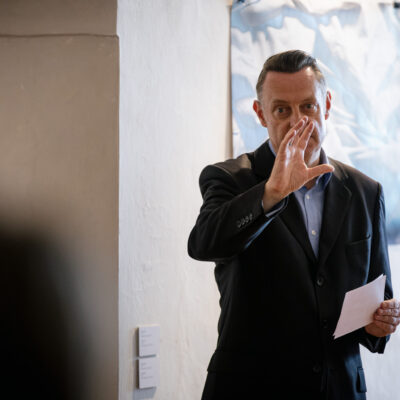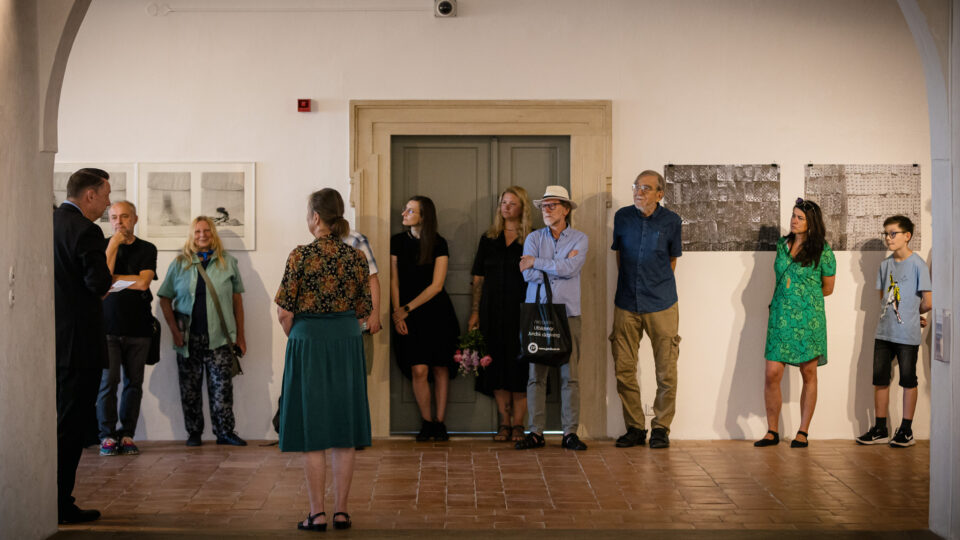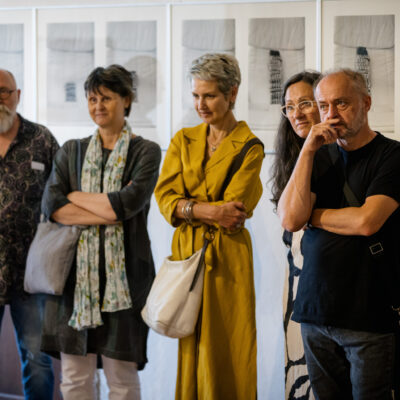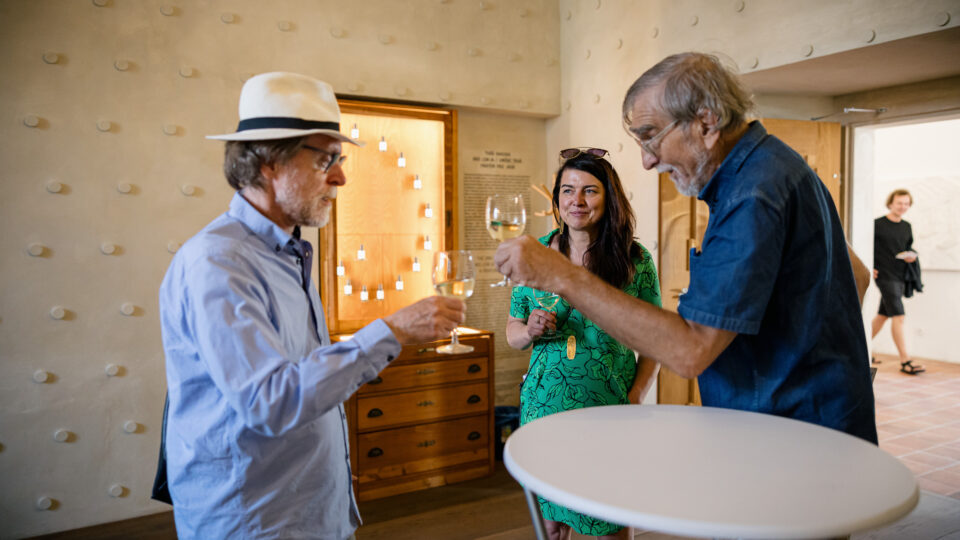Photographer Jiřina Hankeová (born 1948) lives and works in Kladno. Her work is based on focused observation of the world around her and within her. She incorporates details and sections of this observed reality into series of conceptually interrelated compositions whose delicate precision and inner transcendence bring to mind the words of the Jesuit mathematician and poet Tommaso Ceva: ‘Poetry is a dream dreamed in the presence of reason.’
Hankeová’s photographic vision can be understood as the quiet revealing of the meaning of things when, in a specific place and at a specific moment, their mutual relationship creates an unspoken message that demands a symbolic reading. The starting point of these meditations is the wholly objective environment that Hankeová inhabits, one where she captures (or assembles) eloquent juxtapositions of visual elements. Mundane (and often coincidentally discovered) motifs undergo a transformation of meaning through a carefully considered contextual reconfiguration, thus acquiring the subtly ‘magical’ quality of a visual code. The involvement of the viewer’s imagination in an interpretive dialogue with Hankeová’s scenes is all the more intense because the situations depicted, with few exceptions, lack a direct human presence. In this space, tangible objects are often present by their substituting shadow – and, in a comparable sense, human presence is paradoxically (residually) felt by its physical absence.
The heart of Hankeová’s exhibition at GASK is her series Nonverbal Communication, which came about as a ‘confessional chronicle’ of her one-time use of antidepressants. Empty blister packs of pills act like ‘readymades’ – ordinary objects from the artist’s everyday life whose gradual multiplication and accumulation into the form of a rickety ‘tower’ takes on a sense of intimate self-reflection, further amplified by the flow of time. In this carefully layered-up structure, which subsequently (inevitably?) collapses, we find a testament to the fragility of human mental health – and to the vulnerability of human society in general.
The thematically related photographs also presented at the exhibition further develop this issue by reflecting on personal and universal notions of order/stability/integration (lined-up blister packs) and chaos/instability/ disintegration (blister packs that are, on the contrary, scattered). In this context, the bed as a place of rest and escape from oneself and the world comes across as an archetypal embodiment of the axis of human mortality spanning from birth (womb) to death (grave). A crumpled bedsheet intuitively recalls the spiritual symbolism of Christ’s shroud which, in the sense of awareness of the painful loss of a loved one, is also reflected in the iconic motif of an empty bed by the Cuban-American artist Félix González-Torres (1957–1996).
In light of the above, we can perceive Jiřina Hankeová’s ghostly self-portrait as a poignant metaphor of how ‘being’ and ‘non-being’ are only separated by the slenderest of veils. Memory, too, can be an addiction.
Richard Drury
